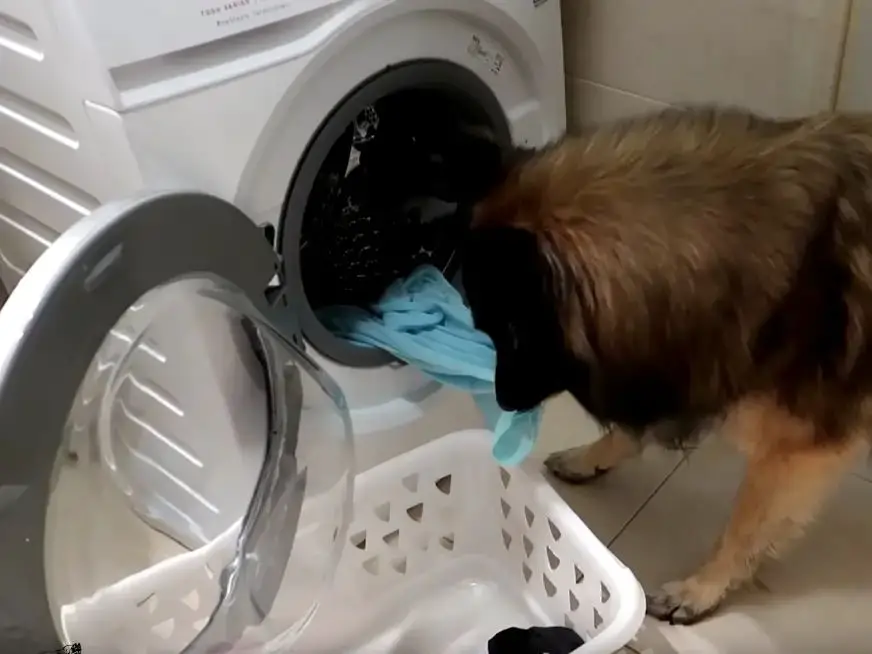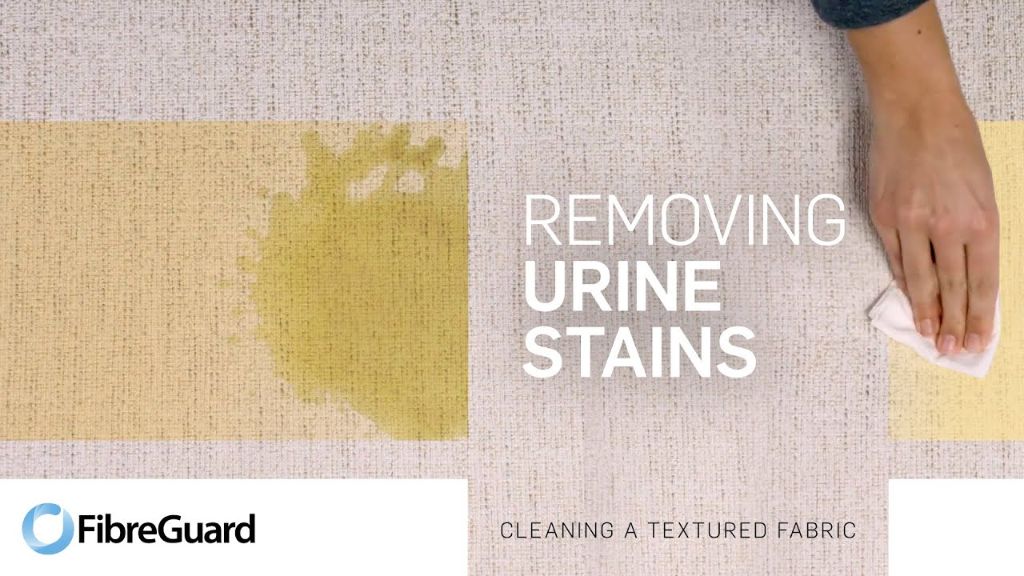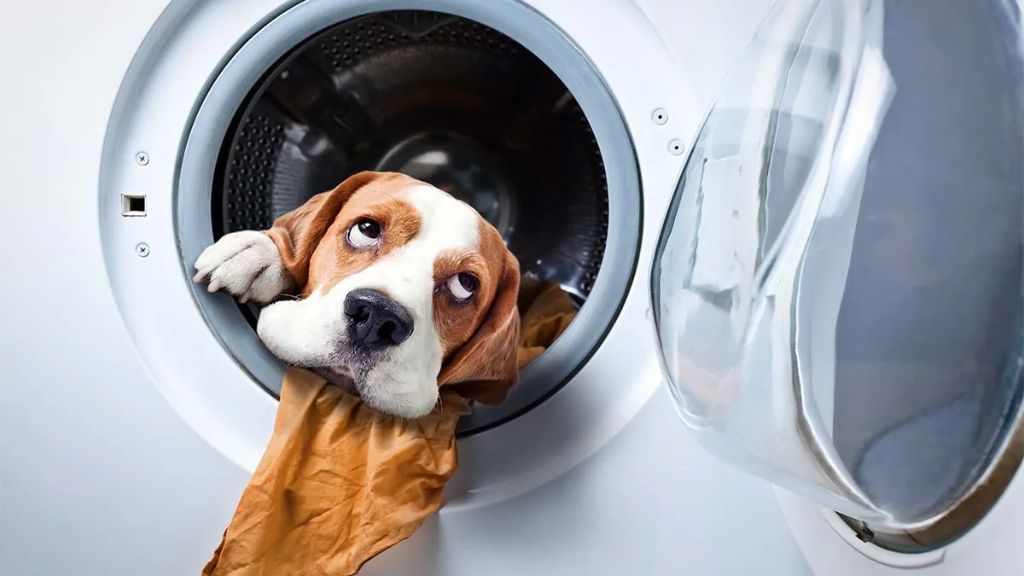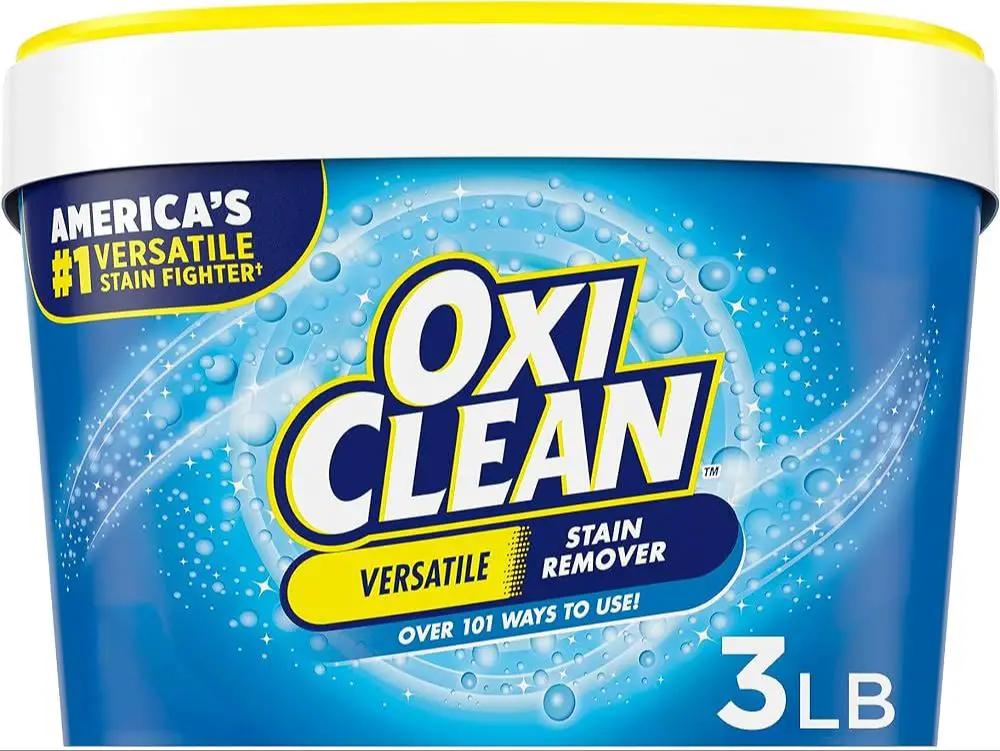Introduction
Dog urine accidents on clothing and fabrics are a common issue that many pet owners face. Even well-trained dogs may occasionally have accidents, especially younger dogs or senior dogs dealing with medical conditions like incontinence. Urine contains compounds like ammonia that can leave strong odors and stains on fabric if not properly treated.
Studies show that around 37% of dog owners deal with their pet having accidents in the house at some point. The prevalence is even higher for puppies and older dogs. So if your dog has peed on clothes or upholstery, know that you’re not alone.
It’s important to learn how to effectively remove dog urine from fabric to avoid permanent damage or lingering odors. With the right cleaning methods, pet stains can usually be fully removed from washable clothes and fabrics. This guide will provide tips on pre-treating, washing, and preventing dog urine stains and smells.
The Composition of Dog Urine

Dog urine contains a number of components that can make it difficult to remove from fabrics. The main components of dog urine are:
- Urea – This is the main organic compound in dog urine, making up the majority of the nitrogenous waste. Urea breaks down into ammonia, which causes the characteristic odor of dog urine.
- Ammonia – Ammonia is a pungent, colorless gas that forms when urea breaks down. Ammonia has a harsh, alkaline pH that can damage and discolor fabrics [1].
- Acids – Dog urine contains various acidic compounds like uric acid, creatinine and dissolved ions. These acidic components give dog urine a relatively low pH around 6 or 7.
The combination of ammonia and acids in dog urine can cause staining, bleaching and damage to fabrics as the chemicals interact with the dyes and fibers. That’s why it’s important to treat dog urine stains properly to neutralize the chemicals.
The Impact of Dog Urine on Fabrics
Dog urine can have a significant impact on fabrics and cause noticeable damage. The main issues caused by dog urine on fabrics are:
Discoloration from urine – Dog urine contains compounds like urea and uric acid that act as dyes when soaked into fabric. This can lead to yellow, brown, or orange stains, depending on the original color of the fabric. The discoloration occurs because the acid in the urine causes a chemical reaction with the dyes and fibers in the fabric [1].

Breakdown of fibers – The ammonia in dog urine is a harsh chemical that can actually break down the fibers in fabric over time. This can weaken and damage the material. Natural fibers like cotton, wool, and silk are especially prone to fiber damage from prolonged contact with dog urine [2].
Lingering odors – The compounds in dog urine can leave stubborn, unpleasant odors long after the initial accident. Bacteria in the urine breaks down the uric acid into ammonia which produces a potent urine smell. The ammonia smell can linger in fabric, becoming more pungent over time. Dog urine odors can be difficult to fully eliminate from fabrics [3].
Pre-Treating the Stain
Pre-treating the stained area with an enzymatic cleaner is crucial for removing dog urine from fabrics before washing. Enzymatic cleaners work to break down the compounds in urine that cause lingering odors. According to How to remove pee, urine stains from clothing and furniture, you’ll want to let the enzymatic cleaner soak into the fabric for at least 10 minutes before scrubbing and rinsing. This gives the enzymes time to work at breaking down the urine.
Once you’ve let it soak, scrub the area with a soft brush to help work the enzymatic cleaner deep into the fibers. Pay special attention to scrubbing along the edges of the stain. According to How To Remove Dog Pee from Carpets, Couches, Beds, scrubbing activates the enzymes to maximize odor removal. Rinse the area with clean water and repeat the process as needed until no more urine can be extracted.
Washing Machine Settings
To fully remove dog urine from fabric, it’s important to use the right washing machine settings. According to Rattle Hum Laundry, you’ll want to wash the soiled item on the hottest recommended washing machine setting using detergent and vinegar. The hot water helps to fully dissolve the urine salts and enzymes so they can be flushed away.
Additionally, choose the longest wash cycle possible. A longer wash gives the detergent and vinegar more time to work at lifting stains and neutralizing odors. According to laundry experts, the wash cycle should be at least 25 minutes for heavily soiled laundry.
Finally, be sure to select a double rinse cycle. The extra rinse will help flush away any remaining urine residue and prevent redeposition of stains. As noted on Mom.com,dog urine contains a high amount of salts that can get left behind without thorough rinsing.
By washing urine-soiled fabrics in hot water, using a long wash cycle, and double rinsing, you can be confident the wash will fully remove dog urine from the fabric.
Vinegar to Neutralize Odor
White vinegar is often recommended as a natural way to help remove odors from clothing and fabrics. The acidic nature of vinegar helps to neutralize and break down the compounds that cause foul odors from urine stains (source).
There are a couple ways you can use vinegar in the laundry process:

- Add 1-2 cups of white vinegar to the wash cycle along with your regular detergent. The vinegar will help break down odors and can boost cleaning power.
- Use vinegar during the rinse cycle. Add 1 cup of vinegar to the rinse compartment or dilute 1 part vinegar with 3 parts water and add to the washing machine drum.
Vinegar is safe for most washable fabrics. It works by reacting with the alkaline salts in urine to form odorless acetate compounds. This helps get rid of that lingering urine smell in clothes. Just make sure to avoid using vinegar on silk or wool, as it may damage delicate fabrics.
Bleach or Hydrogen Peroxide
Bleach or hydrogen peroxide can be effective at removing dog urine stains from white fabrics. However, it’s important to note that bleach and hydrogen peroxide should only be used on white fabrics, as they can discolor or damage colored fabrics.
For white cotton, linen, or synthetic fabrics, diluted bleach can help sanitize the fabric and remove the urine stain and odor. Mix 1 part regular bleach with 10 parts water. Apply a small amount directly to the stain and let sit for 5 minutes before washing as usual [1]. Be sure to rinse the fabric thoroughly.
Hydrogen peroxide can also help lift urine stains from white fabrics. Mix equal parts hydrogen peroxide and water in a spray bottle and lightly spritz the stain. Let sit for 10-15 minutes before washing as normal [2]. The peroxide will bubble up as it reacts with the urine, helping to sanitize and remove the stain.
While effective on whites, avoid using bleach or peroxide on colored fabrics as it can lead to discoloration. For colored fabrics, use an oxygen-based cleaner instead.
Oxygen Cleansers
Oxygen cleansers, such as OxiClean, can help lift urine stains from fabrics by using the power of oxygen. These cleansers contain ingredients like sodium percarbonate that releases hydrogen peroxide when mixed with water. The hydrogen peroxide acts as a safe bleach, breaking down stubborn stains through a chemical reaction.

Make a paste by mixing the oxygen cleanser powder with warm water and apply it directly to the stained area. Allow it to sit for at least 15 minutes before washing as usual. The oxygen-based formula will get deep into the fibers to lift the urine stain out. Oxygen cleansers are color-safe as well, so they can be used on all washable fabrics.
For old or set-in stains, you may need to let the oxygen cleanser paste sit for longer, or repeat the treatment multiple times to fully lift the stain. But these cleansers can be highly effective at removing the entire trace of the stain without using harsh chemicals.
Repeat as Needed
Removing dog urine from fabrics often requires multiple washing cycles. Even after pre-treating and washing with special detergents, the urine odor may linger. Do not get discouraged if the smell remains after the first wash.
After washing, take the item out and do a sniff test. If any trace of the urine odor remains, run it through the wash cycle again using the same process. You may need to repeat this multiple times before the urine smell completely disappears.
With each additional wash cycle, check the fabric carefully. Assess if the stain is lightening and if the odor is diminishing. You will know when success has been achieved once no stain is visible and the urine odor can no longer be detected.
Be patient and persistent. Removing dog urine from fabrics takes time and repeated effort. But with consistent treatment, you can get even old set-in stains and odors out permanently.
Prevention Tips
The best way to prevent dog urine stains on fabrics is to take preventative measures in the first place. Here are some tips to avoid dog urine stains:
Take dogs out to potty frequently, especially first thing in the morning, before crating, after naps, and before bedtime. Establish a regular potty schedule. Allowing more opportunities to relieve themselves outdoors can help reduce accidents.
Clean accidents quickly as soon as they happen. Blot up as much urine as possible with a clean towel. The faster you can dilute and rinse away urine, the less likely it will set into fabric.
Consider belly bands for male dogs who mark in the house. Belly bands wrap around a male dog’s waist to cover and absorb urine from marking behaviors.
Restrict access to rooms or areas where accidents frequently occur until housetraining improves. Close doors or use baby gates to limit access.
Consider crate training dogs when you are away or unable to supervise. Crates can help minimize accidents around the house.